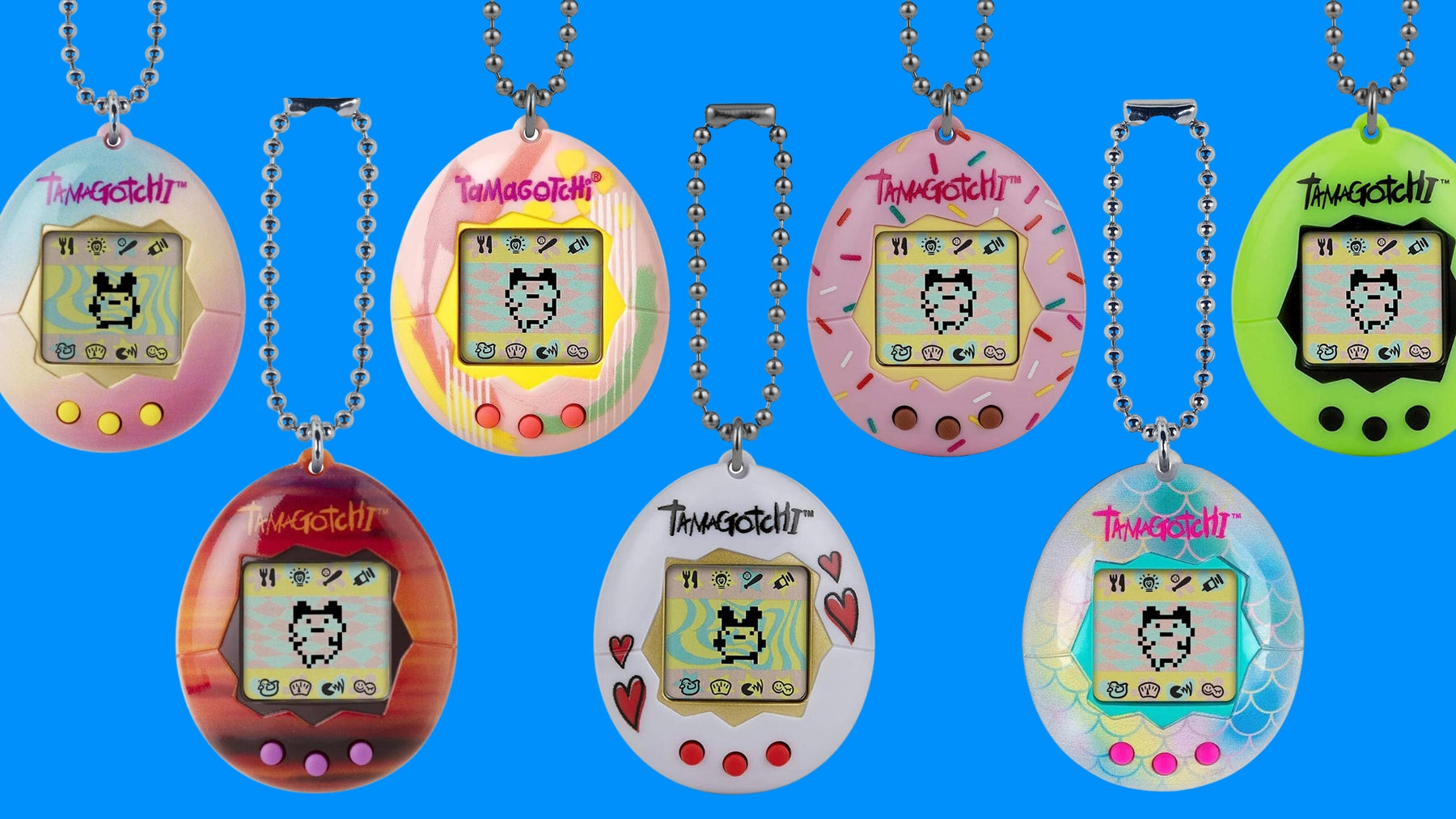
90s Nostalgia: How Tamagotchis Defined a Decade
Millennials, it’s time to take a trip down memory lane.
It’s the 1990s, and you’re eating roll–ups and LCM bars at recess, swapping Pokemon and Dragon Ball Z cards at lunch time, and watching Play School when you get home. The weekends are all about Video Hits and Cheez TV, wearing moon shoes, bouncing on Pogo Sticks and playing Toss & Catch.
Your favourite kids TV shows are Sailor Moon, The Saddle Club, Sabrina the Teenage Witch, CatDog, Rugrats, The PowerPuff Girls, Power Rangers, Art Attack, Arthur, Hey Arnold and Johnson and Friends – just to name a few. Life was wicked!
Without a doubt, the 90s was the Golden Age of kids toys too.
It was the era of Beanie Babies, Betty Spaghetty, Super Soakers, Polly Pocket’s, Pogs, Nintendo 64, Hot Wheels, Game Boy, Barbie, Baby Born and Mr Potato Head.
However, in the aisles of Toys "R" Us and Toyworld, a new fad was flying off the shelves. They were called Tamagotchis…
The Popularity of Virtual Pets
Although traditional, imaginative play toys were still sought after in the 1990s, greater advancements in entertainment based technology saw a rise in a new type of toy, dubbed a virtual pet.
It was interactivity in a way that kids had never experienced before, so it was almost an instant hit. Common features included responding to voice commands and touch, supplying the pet with food, friends and clothes and connectivity modes with other models.
American video game developer PF Magic was responsible for releasing the first widely popular virtual pet series called Dogz in 1995. Its success saw an accompanying Catz unveiled the following year in 1996, eventually becoming a franchise known as Petz. However, the trend didn’t become a craze until Tamagotchis came onto the market in 1996.
Tamagotchis were uniquely egg–shaped devices on ball chain lanyards. They were invented by developer Aki Maita and businessman Akihiro Yokoi, and distributed by Japanese multinational toy manufacturer Bandai in Tokyo. They were a conveniently small, handheld video game with an interface that consisted of three buttons.
Tamagotchis saw plenty of competition in the subsequent years, but its niche popularity was mostly unrivalled. Bandai in collaboration with WiZ began the Digimon franchise (short for Digital Monster) in 1997. Its intention was to be a more masculine counterpart to the Tamagotchi, which had so far attracted a mostly female audience.
Playmates tried Nano Kitty in 1997, but American toy manufacturer Tiger Electronics upped the ante with Giga Pets, and then the universally loved or loathed fluffy Furby in 1998. That same year, Nintendo introduced its Pokemon fans to the world of virtual pets with a handheld Pikachu game.
Viacom and Nickelodeon launched virtual pet website Neopets in 1999, and in 2000, robopet Poo-Chi Dog came out, made by Japanese toy and animation studio, Sega Toys.
The "Tamagotchi Effect"
Playing with a Tamagotchi was relatively simple.
Users had to first set the clock (as well as their name, date of birth and pet name and gender in later models) before watching their pet “hatch” ready to be looked after through their entire life cycle from egg, to baby, to child, to teen to adult.
Caring for a Tamagotchi involved hunger meters, happy meters, training meters and discipline meters, which tracked the user’s every action and outcome, as well as the health and attitudes of the pet itself.
The first series of Tamagotchis could only be paused by going to set the clock – effectively stopping time in the game – but in later models, a pause function was included.
They could eat, sleep, get sick, poop and even “die”, so children became very emotionally and physically invested in their digital pet’s welfare. It was this seemingly obsessive behaviour that began to worry both parents and teachers alike.
Many kids took their first Tamagotchis to school for fear of leaving them alone during the day without sustenance (the earlier models’ life expectancy was just 30 mins if left unattended). This led to distractions and disruptions, so in some schools, it triggered a blanket ban.
Whilst many criticised Tamagotchis over the attachments users had to them, others saw them as a great, and ultimately harmless, alternative to having a real pet, which many kids would be ill–equipped to care for in real life. It also taught them about empathy, love, loss and responsibility.
A Cultural Comeback
It may be just over 26 years this November since the Tamagotchi took the world by storm, but it hasn’t been 26 years since it was last in fashion.
Bandai sold 10 million units in mid 1997, then 13 million by October. By that time, Generation 1, Generation 2 and Angel Tamagotchis had all had an international release. By 1998, almost 40 million units were purchased worldwide, with 20 million of those in Japan alone.
Over the subsequent decades there have been many versions. The Connection series came out across 2004 – 2009 (where players could connect via infrared and Tamagotchis could marry and have families). In 2017, there was a rerelease of the original to celebrate the franchise’s 20th anniversary, as well as a new style, the Tamagotchi Mini.
In July 2021, the Tamagotchi Pix was released. It included buttons with touch sensitivity for the first time, and a camera that could be used to take pictures and access special features.
As of that year, over 83 million Tamagotchis had been sold in total, but it wasn’t just catering to kids anymore. Adults were now reminiscing about popular products from their childhood, and viewing them through a nostalgic and collectable lens. This saw a surge in sales and gadgets like the Tamagotchi were being appreciated all over again.
And as of a few weeks ago, July 2023, The Tamagotchi Uni hit the market. It’s the first colour–screen Tamagotchi device and it comes with a wrist strap so it can be worn like a watch. It also has built–in Wi–Fi connectivity, so users can link up to an online environment called the Tamaverse. There are many collabs with iconic brands out now too, such as Toy Story, Star Wars and Jurassic Park.
Shop our full range of Tamagotchis right here on the website!

Leave a comment